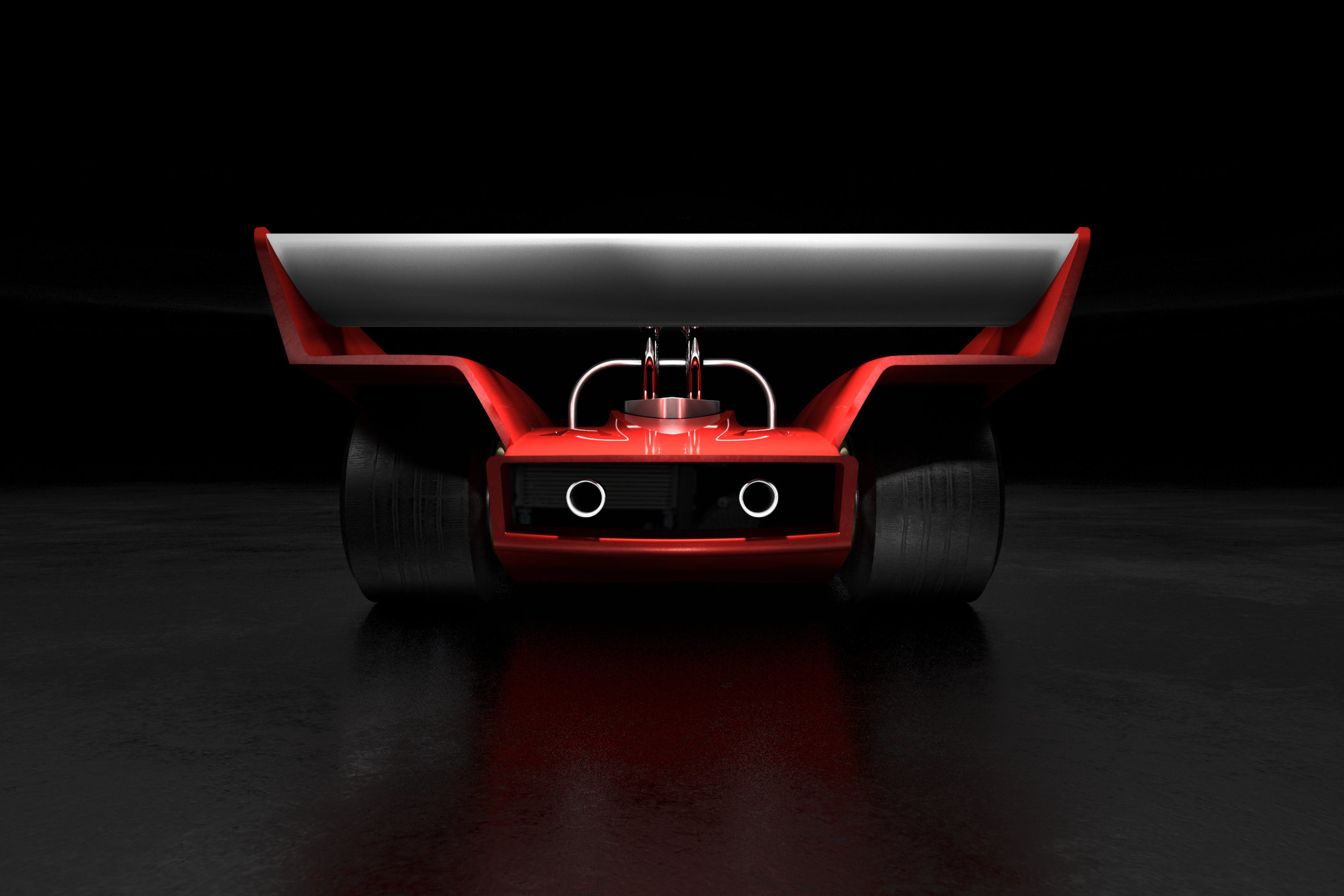The 1970 Lotus Type 66 That Never Was, Is Now A Reality
A Can-Am car Lotus imagined in the late-1960s but never built finally sees the light of day.

Like many car manufacturers built upon a passion for speed, performance and racing cars, Lotus has pretty much done it all and won it all. It raced in open-wheel categories such as the Indy500 and Formula 1 but also at Le Mans and various other prestigious championships around the world. For many years, this was driven by Colin Chapman’s forward-thinking engineering and although not every car was a success, Lotus always found a way to reinvent themselves to become championship contenders once more. Cars like the Lotus Elise and Lotus 7 paved the way for huge international successes and unique racing heritage. And on the occasion of the brand’s 75th anniversary Clive Chapman, Colin Chapman’s son, pulled back the covers of a car that actually never existed. Here’s the story of the fascinating Lotus Type 66.
To say this car never existed, and now does, needs some explaining of course. For this, we take a trip down memory lane and go back to the 1960s and 1970s. This era of racing is often cited as the greatest period in motorsports and sparked a monumental shift in technological innovation and engineering. Not just in Formula 1, but across all levels of racing basically. From GT racing to prototype endurance racing and Formula-type racing, the 1960s and 1970s birthed many legends. One of the premier racing series of that time was the Canadian-American Challenge Cup, shortened to Can-Am. The Can-Am racing series was basically a limitless category of sports car racing, which started in 1966 and lasted until 1987, although the height of the series came to an abrupt end after the 1974 season.
Can-Am is famously quoted as being faster on some tracks than Formula 1 cars of the same era, which given the hugely powerful cars that fielded the Can-Am series at its peak sounds plausible at the least. The championship attracted the biggest and best manufacturers from all corners of the world, with Porsche, Ferrari, McLaren, Lola and Chaparral all competing for multiple years on end. The names of Phill Hill, Bruce McLaren, John Surtees, Jack Brabham, Vic Elford, Jackie Stewart and Jacky Ickx are just a small selection of the wide range of ace drivers that would enter the Can-Am series at one point in their careers. But perhaps the one thing the Can-Am championship is most famous for is the monstrous Porsche 917-30 driven to victory by Mark Donahue in the 1973 season. This was a car so dominant it’s credited with pretty much killing off the Can-Am series.
Throughout the 1960s and 1970s Lotus was one of the most competitive manufacturers of all sorts of racing cars. The brand entered Formula 1 in 1958 through its sister-company Team Lotus and it didn’t take long for the team to win its first race. The biggest successes came with the Lotus 25 and Lotus 49, the latter of which was one of the first cars in open-wheel racing to use the engine a stressed member of the chassis, bolted to a monocoque. Following the domination of these early F1 cars, the Lotus 72 series racked in multiple wins and championships in the 1970s.

Lotus would also enter other types of racing with cars like the Lotus 38 that would win the 1965 edition of the Indy 500 at the hands of Jim Clark. The Lotus Type 66 however, was Colin Chapman’s request to Team Lotus draugthsmann Geoff Ferris to start the design of a Can-Am eligible Lotus sports car. But, as these things sometimes go, it didn’t happen and the Type 66 was to dwindle as a figment of imagination from the onwards with technical drawings and scale models remaining the only evidence of the program.
Until 2023 that is, when Lotus decided to gift itself a nice little birthday present for its 75th birthday; a modern-day recreation of the concept of the Type 66. Based on the original plans found in the archive of Lotus, just 10 of these cars will be built to commemorate the number of races it would have competed in for the 1970 Can-Am season, should it have been built. benefitting from half a century of technological advancements, however, Lotus decided to slightly update its design and engineering. A series of technical drawings were digitalised and used to create 3D renderings, upon which the Lotus team created this newly formed perspective of the Type 66.
The body is made from carbon fibre, something that wasn’t used in racing cars back in the 1960s. The front section was designed to optimise airflow and increase downforce. The result is a car that produces more downforce than its weight when at full speed, far more than the original car would ever be able to achieve. Underneath the carbon fibre shell, painted in the famous red and white Gold Leaf Team Lotus colours, is a period-representative chassis using aluminium sections, bonded joints and aluminium honeycomb panels. There’s all sorts of additional period and modern tech to make the Type 66 match the performance of a present-day GT3 race car. This includes features such as an inboard fuel cell, sequential transmission and anti-stall systems.

True to the Can-Am series nature it was once intended to compete in, power comes from a “period-representative push-rod V8”, complete with intake trumpets on top. Although its capacity is unknown, the output is said to be 830bhp at 8,800rpm. To put this in perspective, the championship-winning McLaren M8D driven by Denny Hulme in the 1970 season had a 7.6-litre Chevrolet V8 pumping out 670bhp.
Combining that bit of information with Lotus’ philosophy of building lightweight cars, this thing will be very fast indeed! As said, Lotus is building just 10 of these and I hope one day there will be a one-make demonstration race of what it can do. But at a price of GBP 1 million each I doubt the owners will push it to its limits as the drivers would have done in 1970.
For more information, please visit LotusCars.com.
Editorial Note: The images in this article are sourced from, and used with permission by LotusCars.com.












